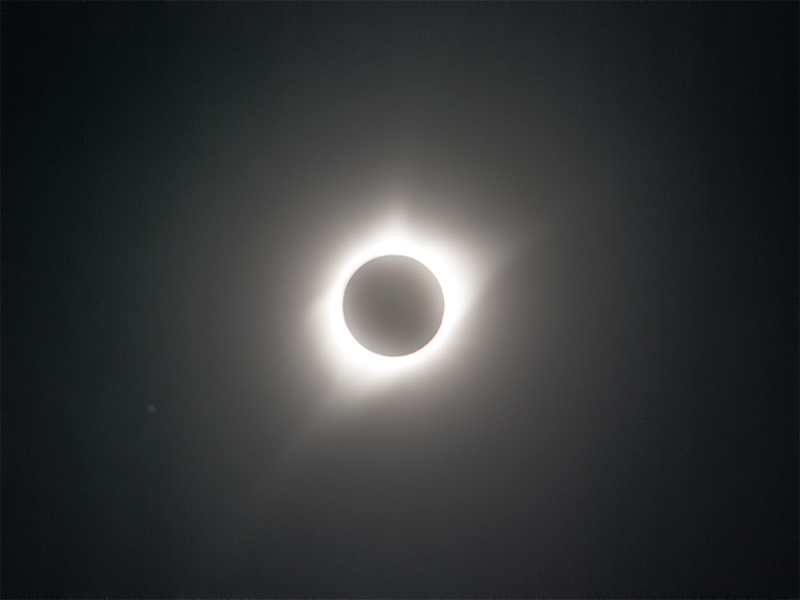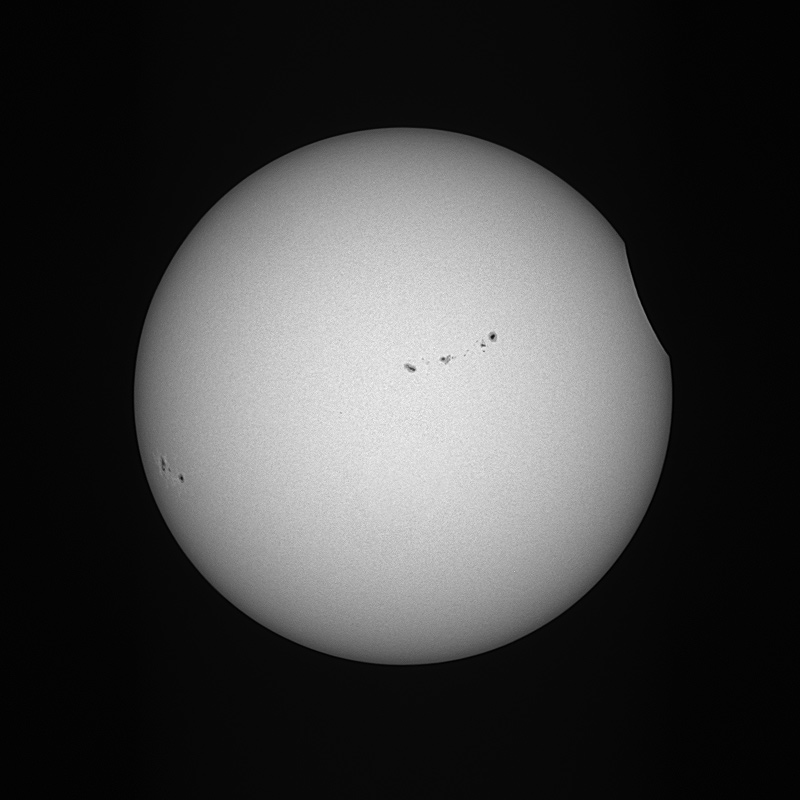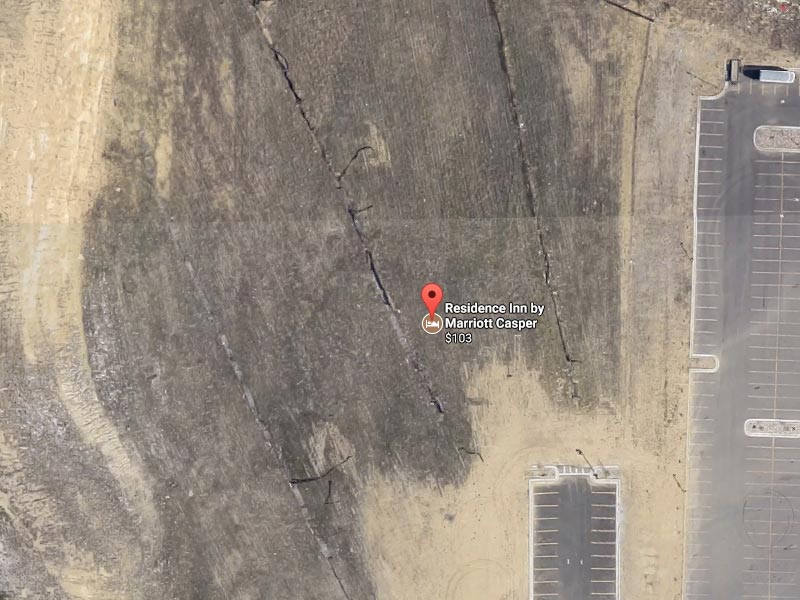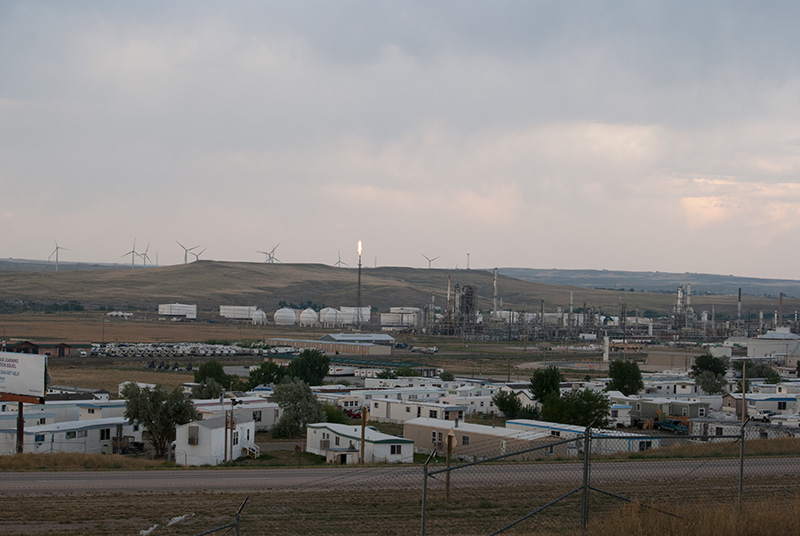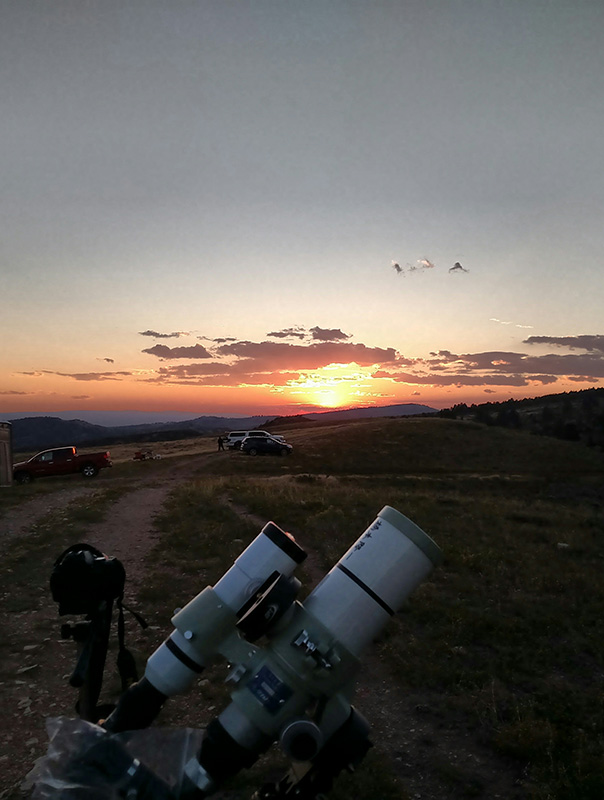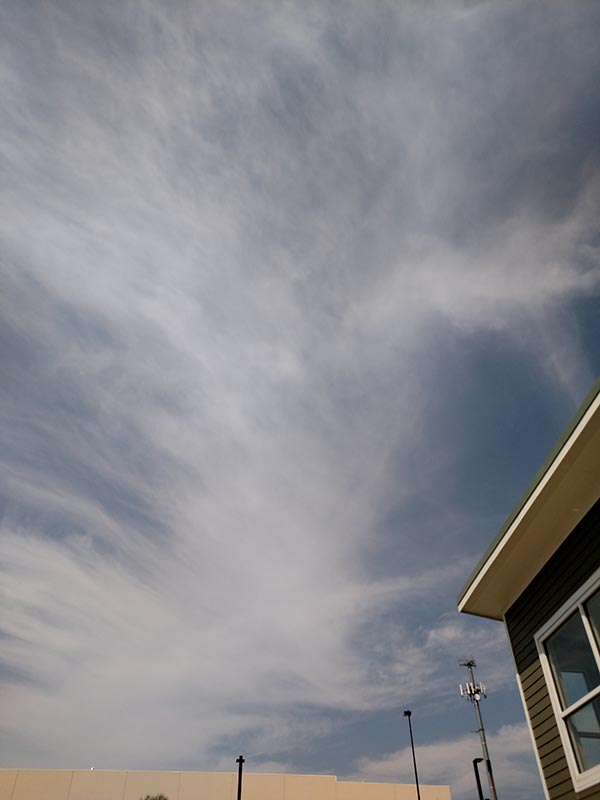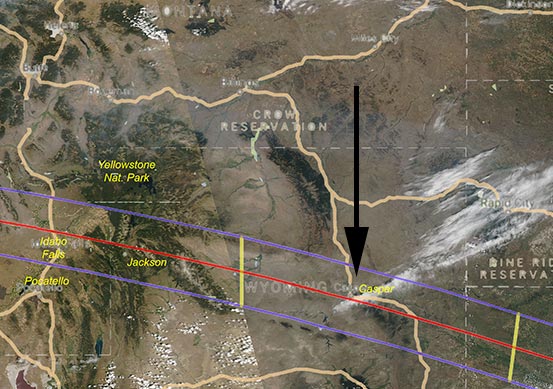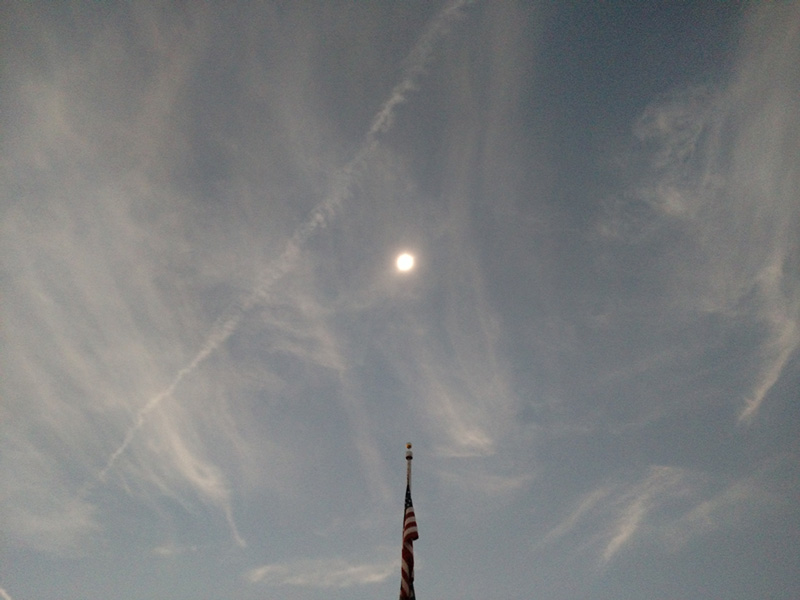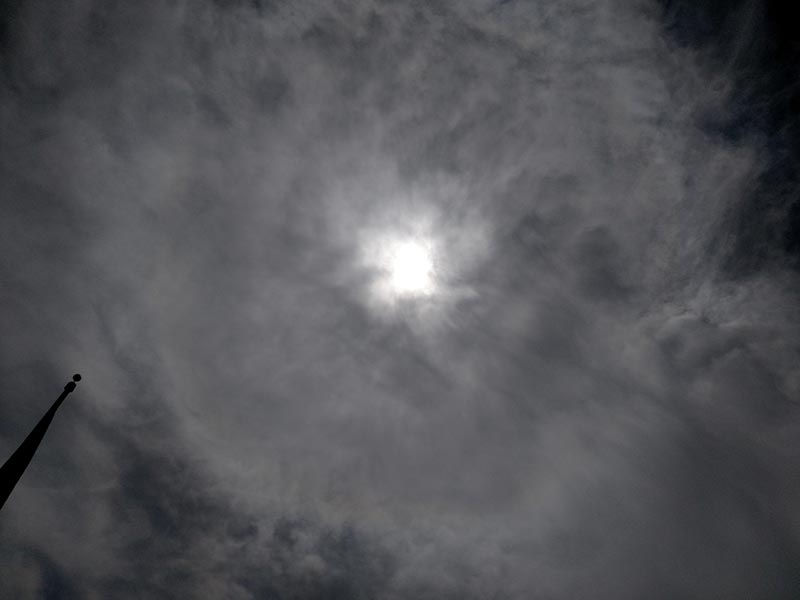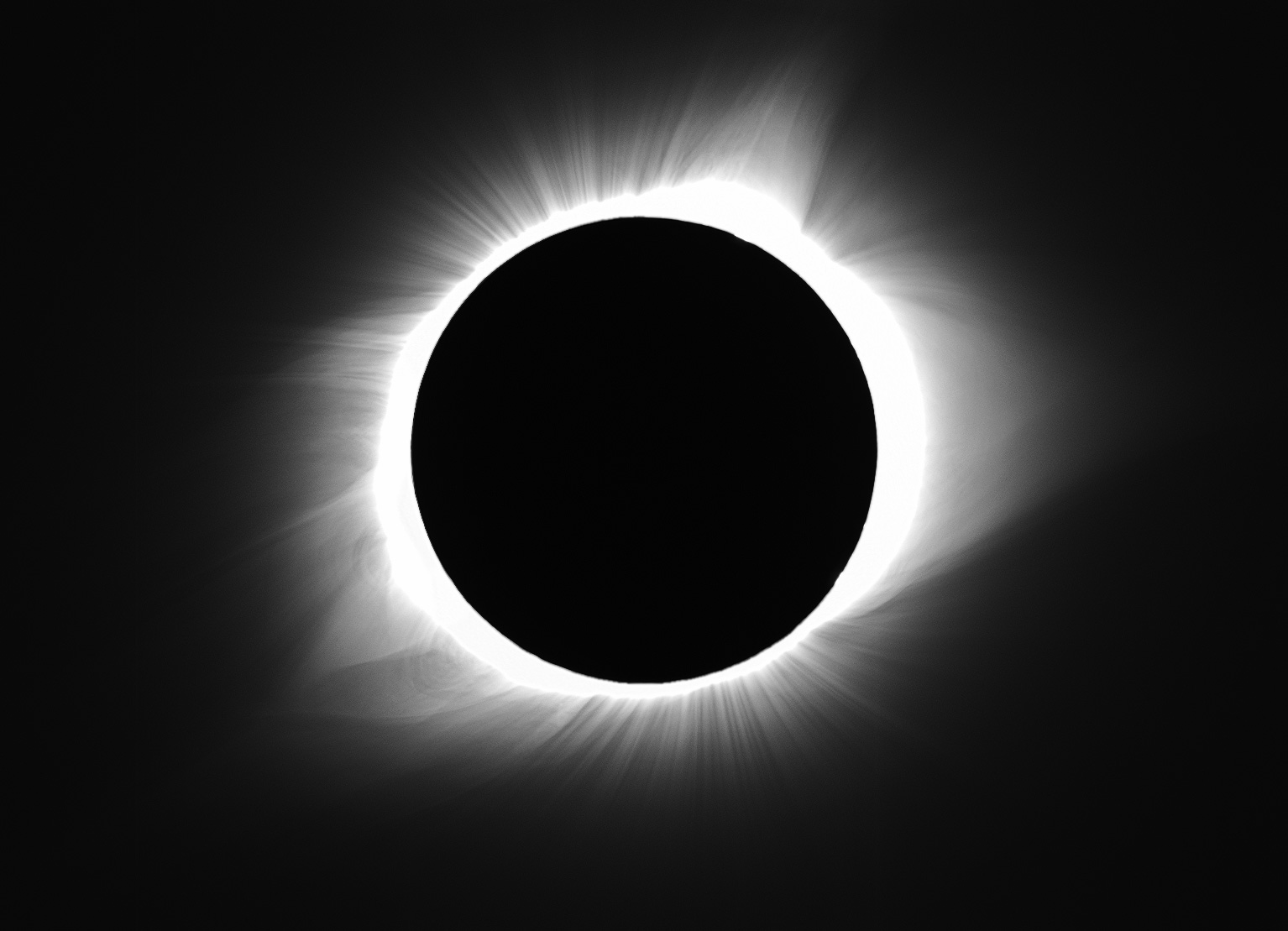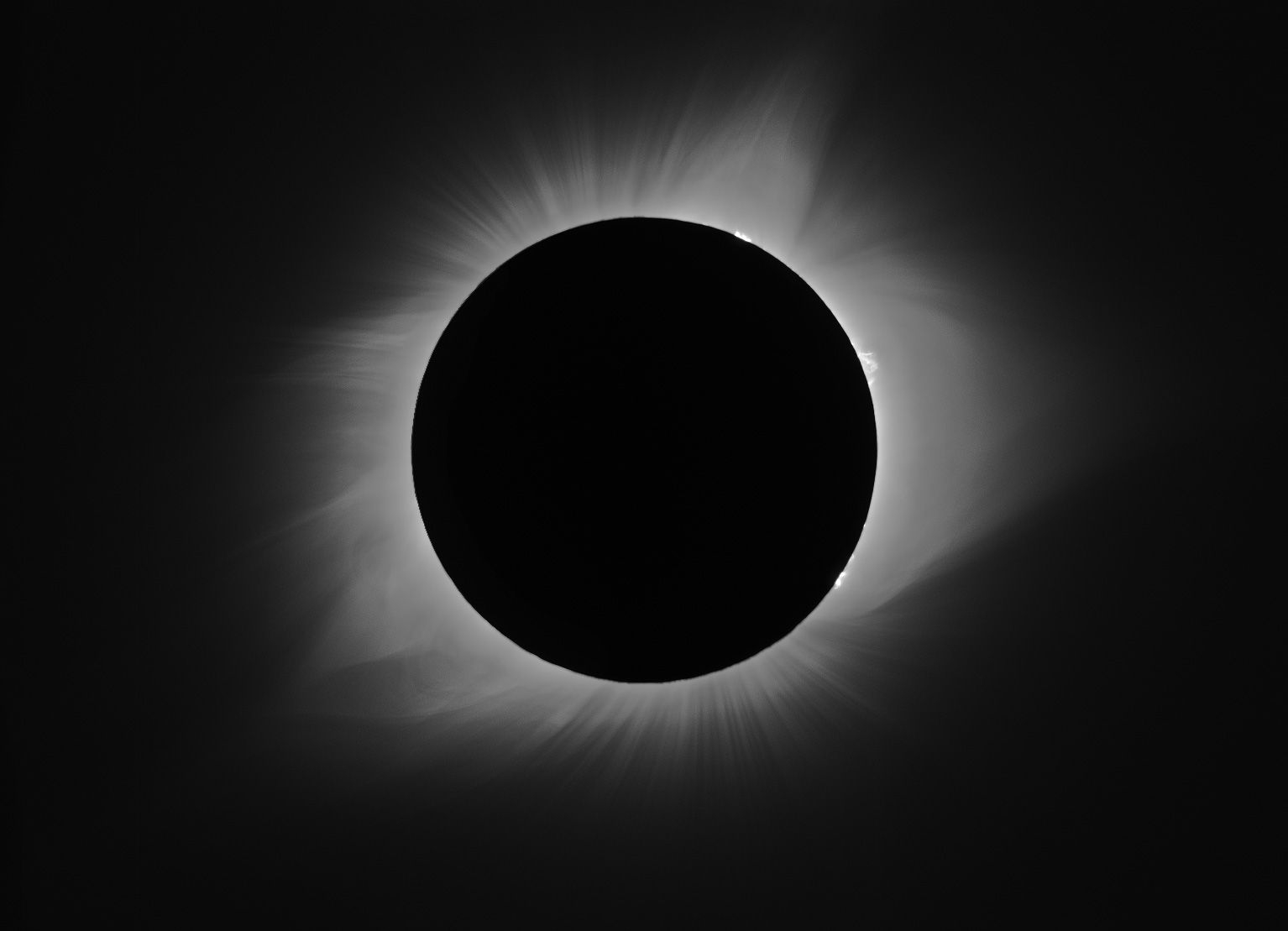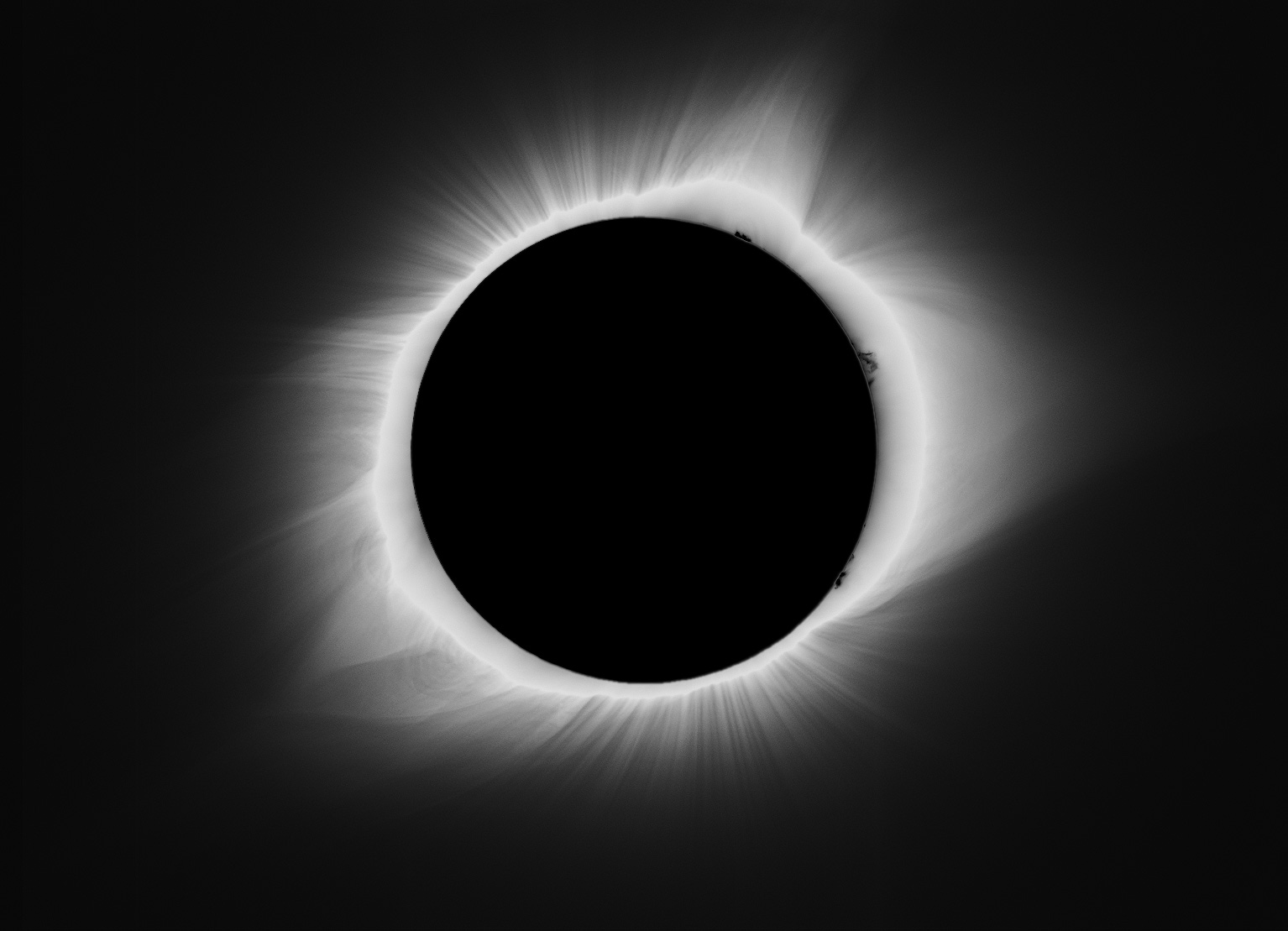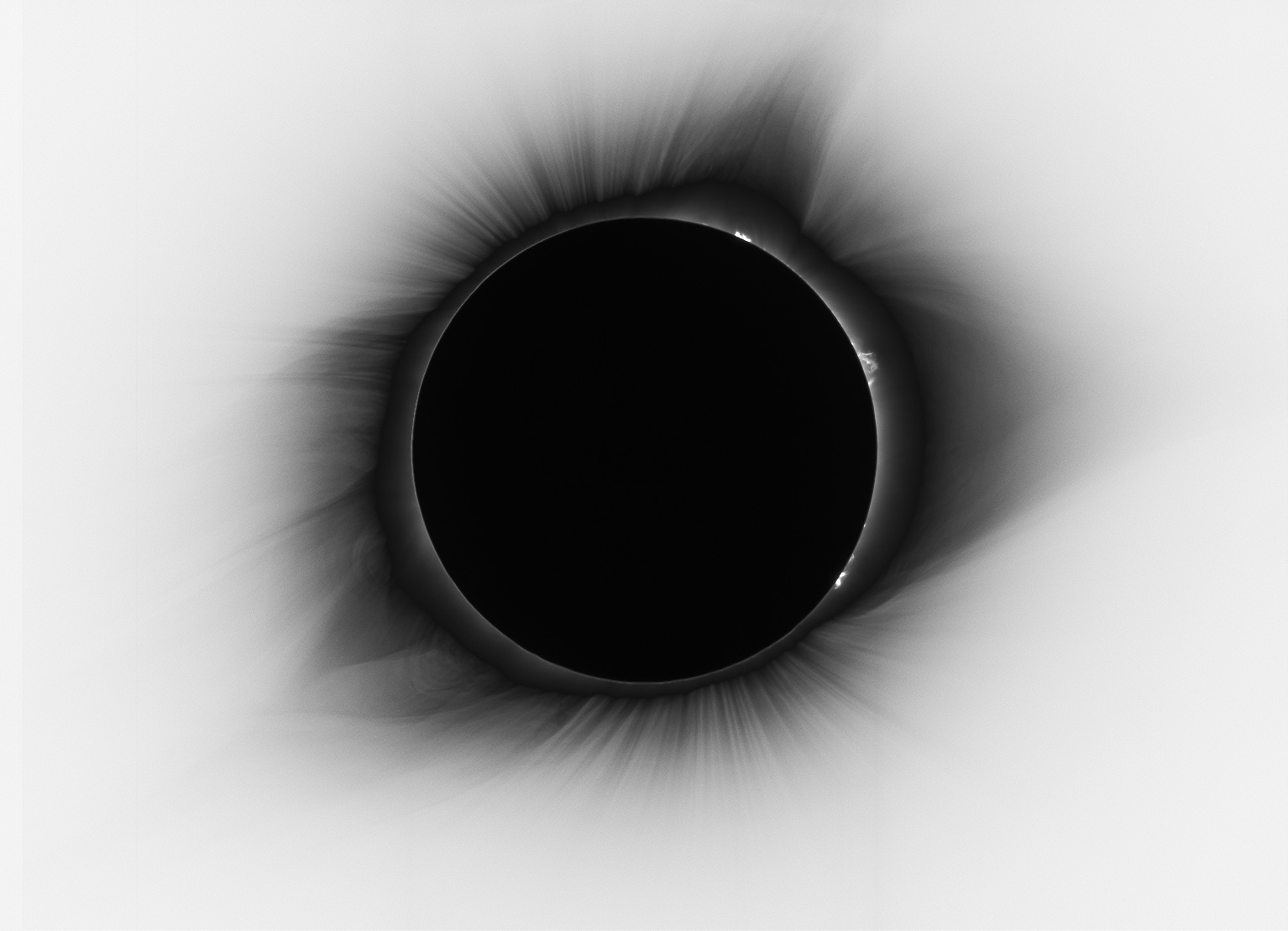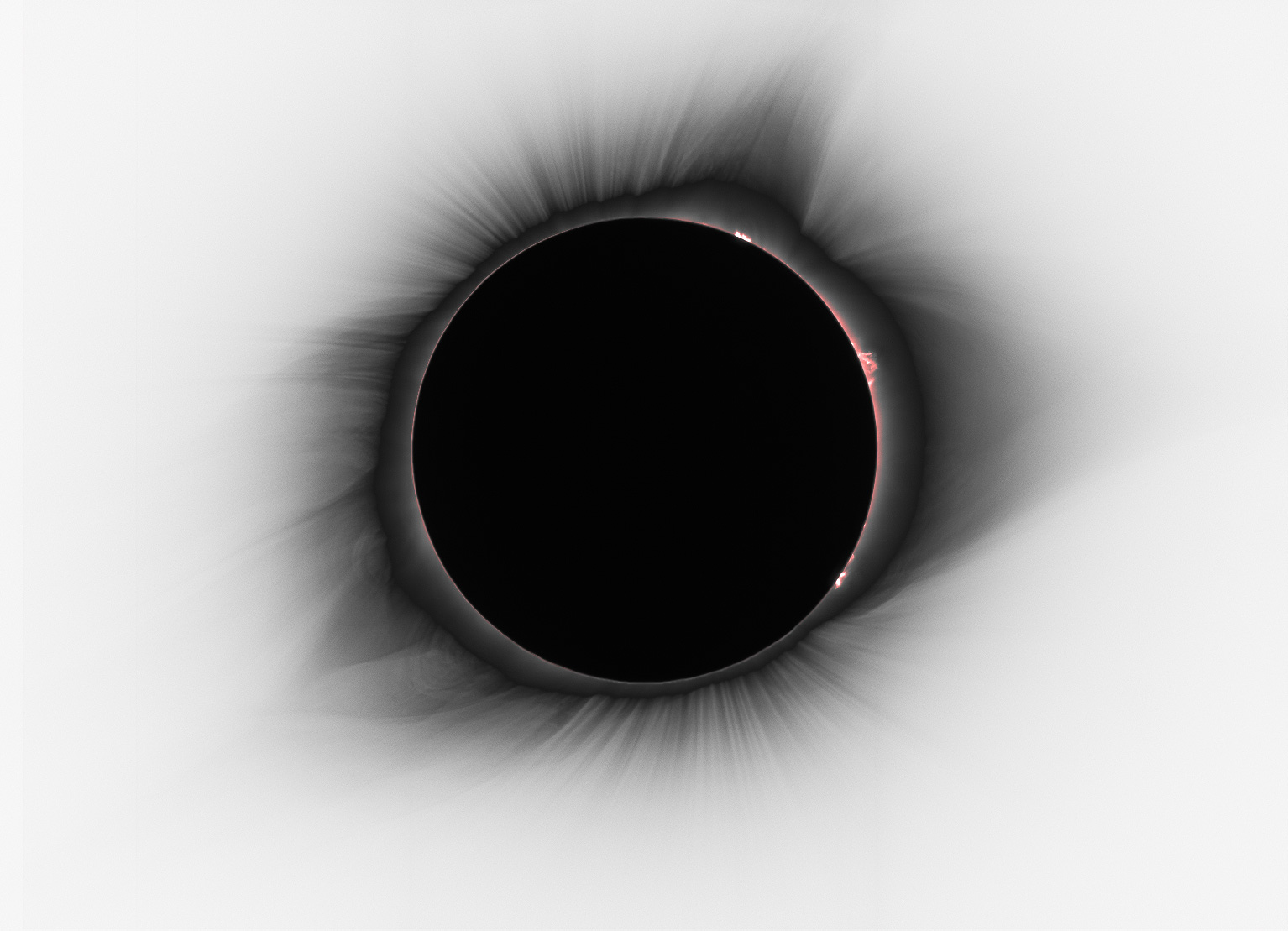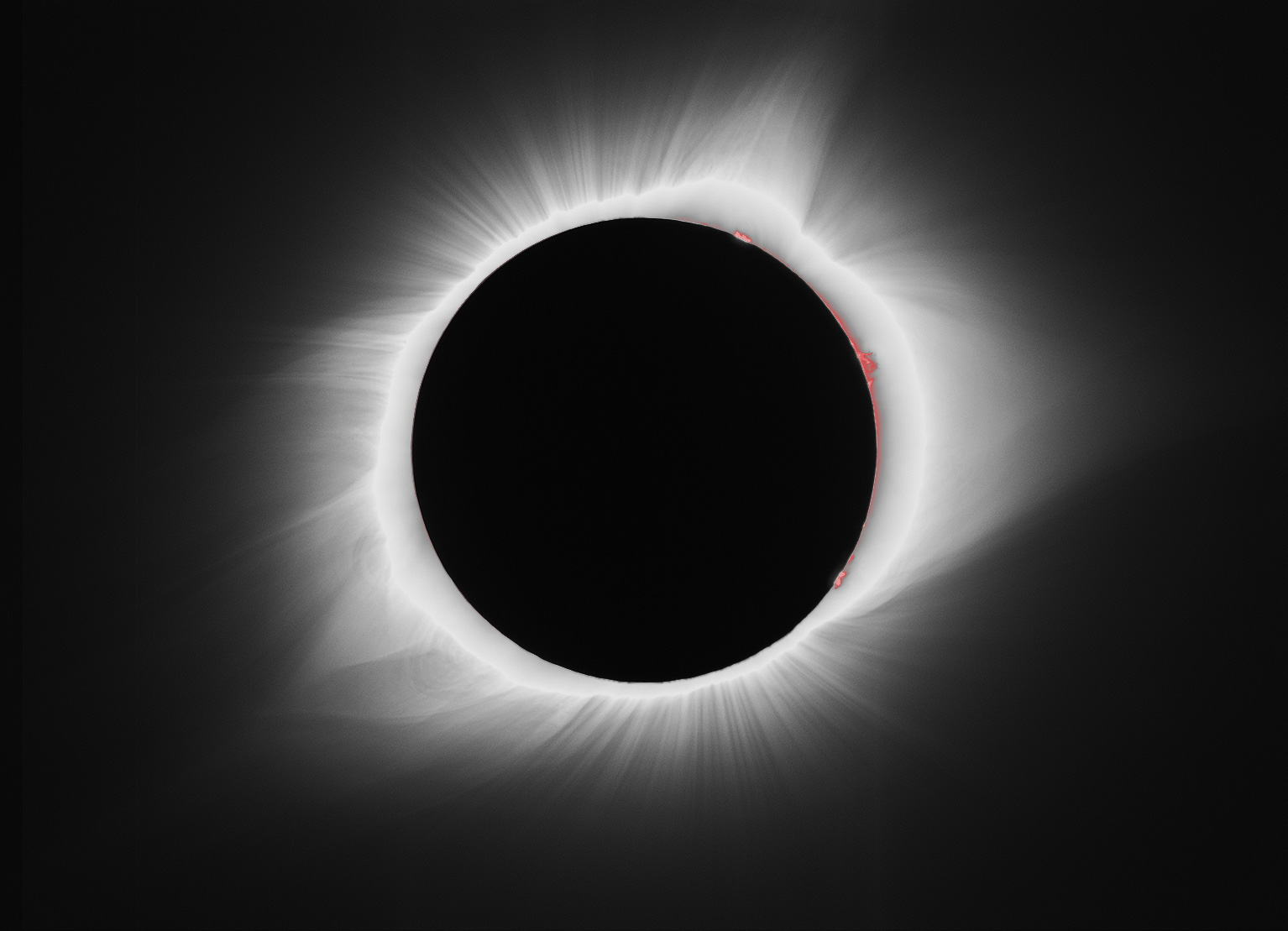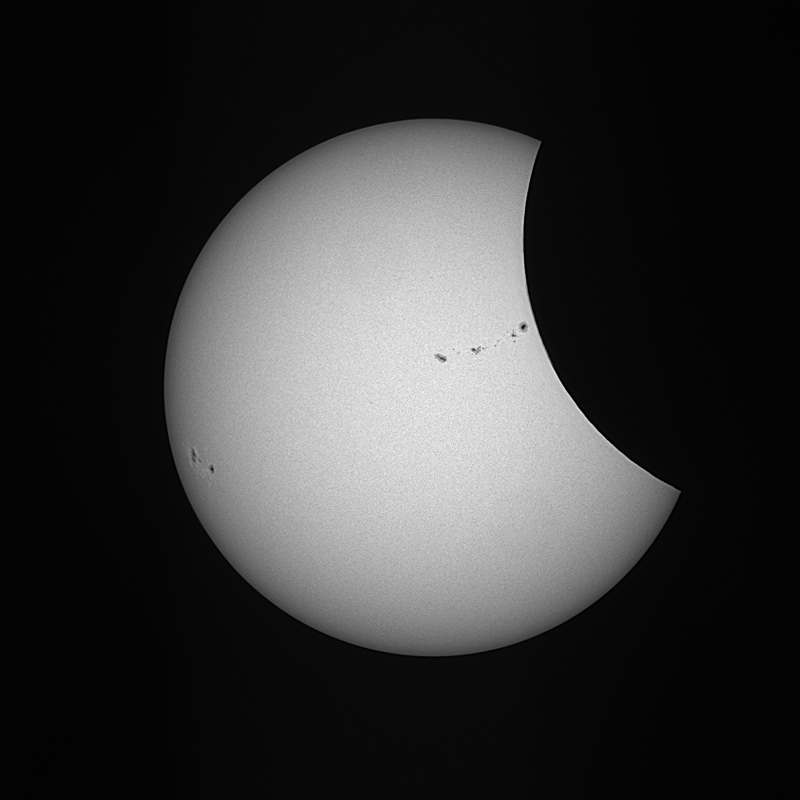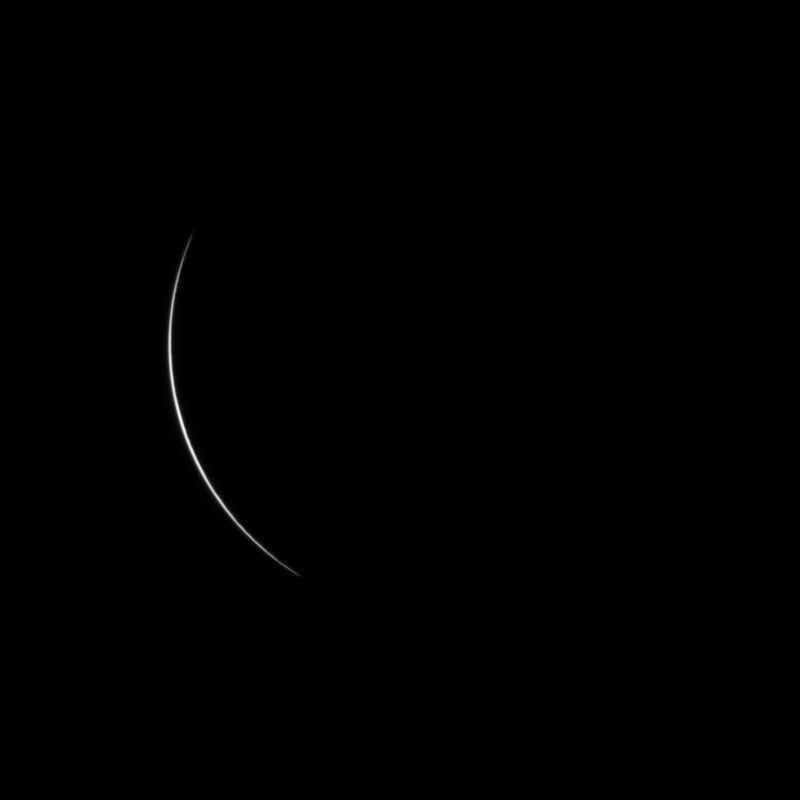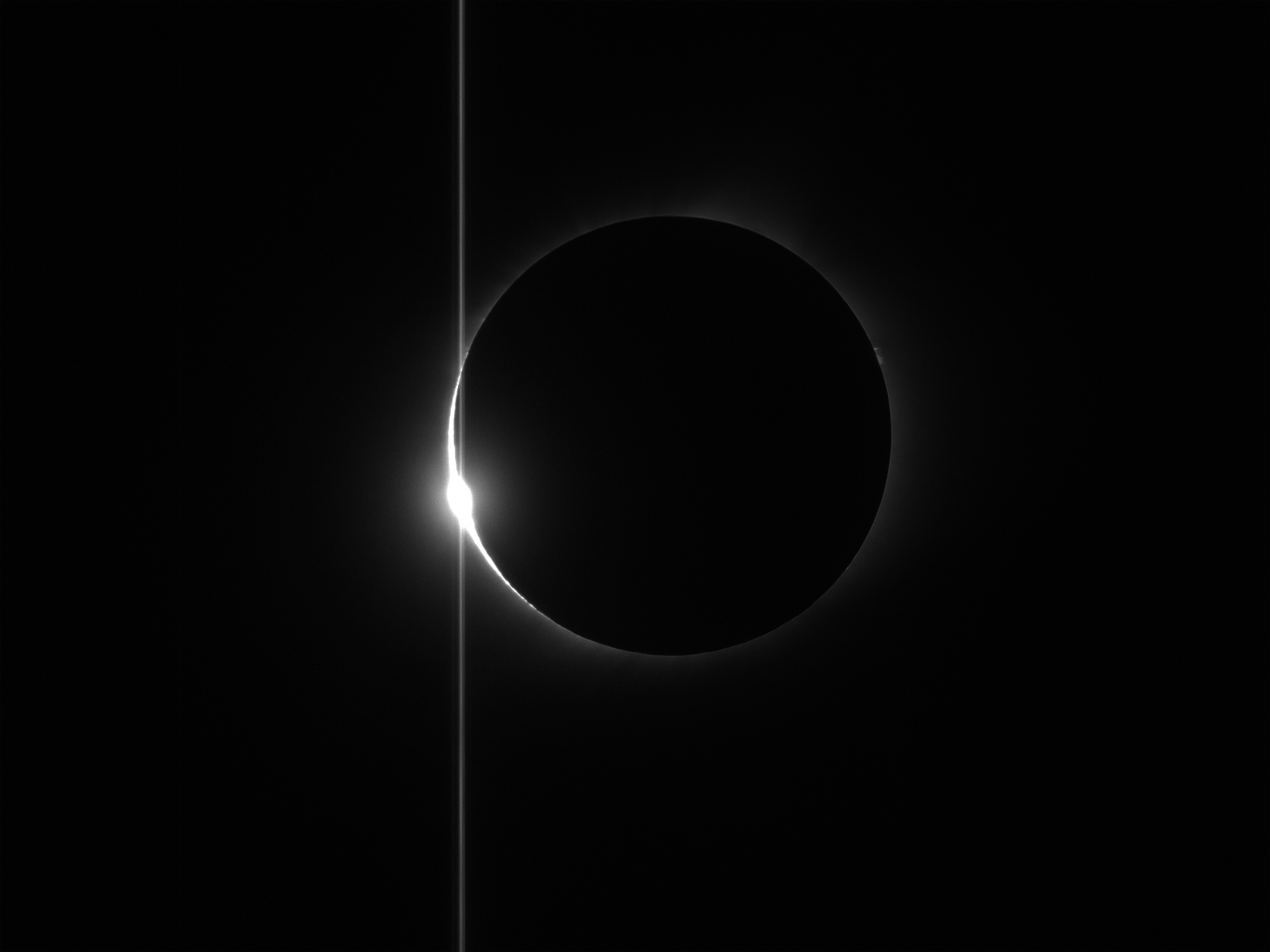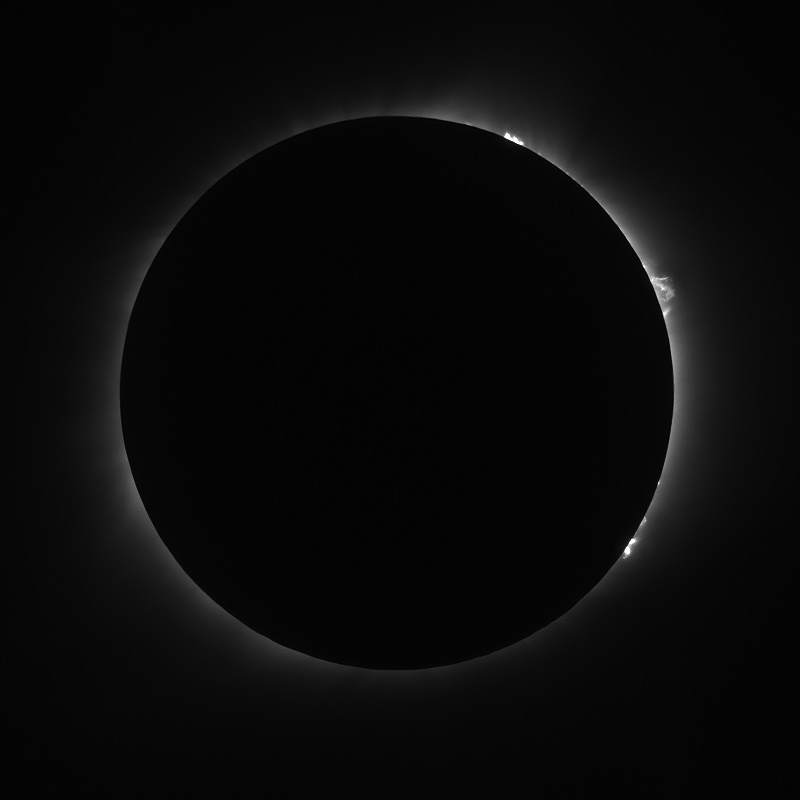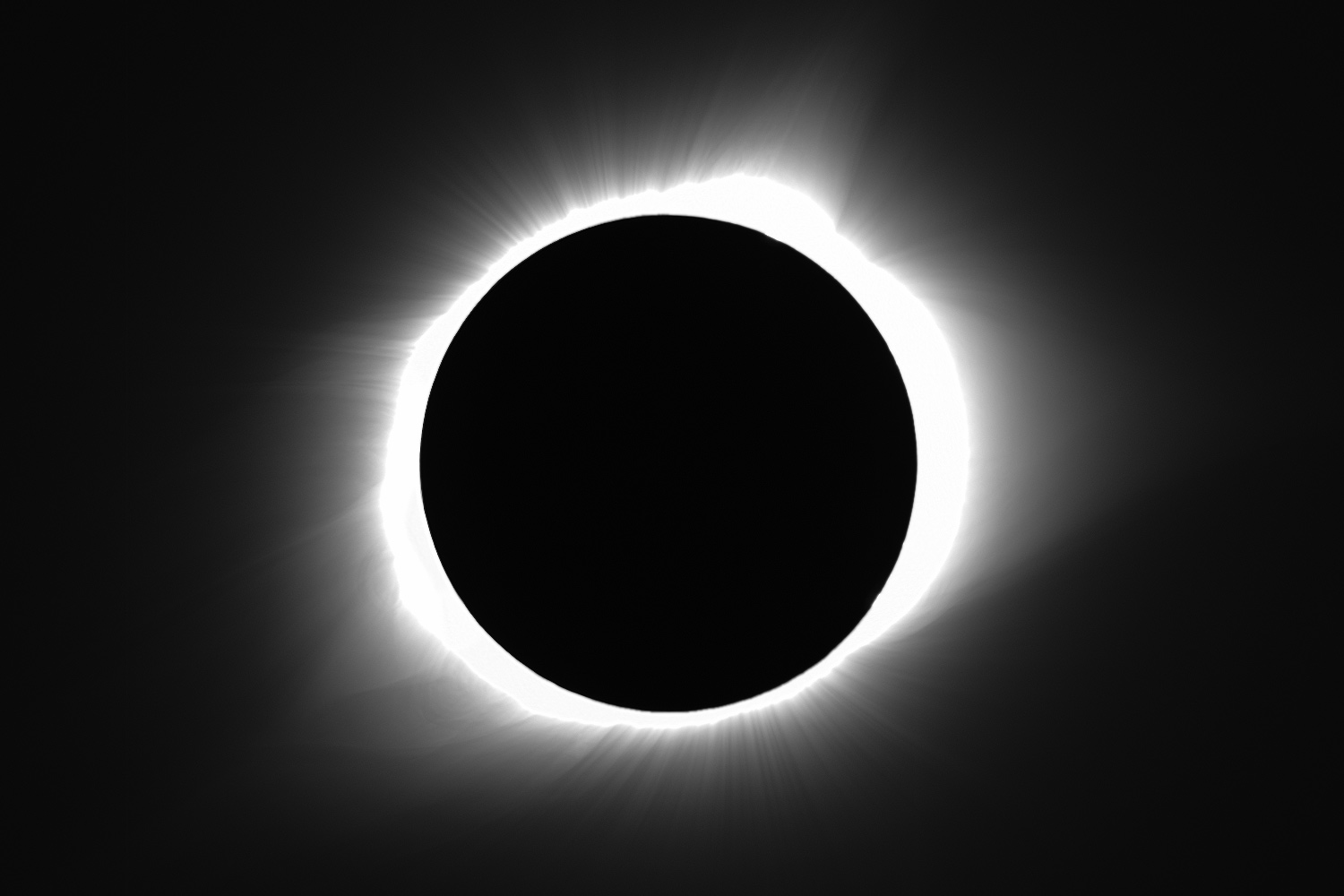Here's a wider field shot of the eclipse i took with a DSLR using a long focal length lens:
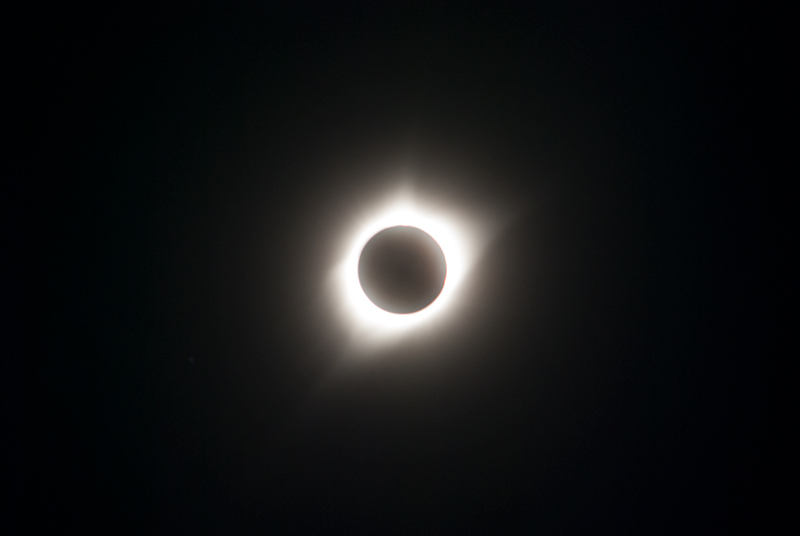 |
| 8/21/2017 solar eclipse Casper, Wyoming |
here's a much brighter (and noisier) version for folks with dark monitors who can't see the star:
unfortunately, i missed focus by a bit so i'm unable to combine this with the sharper telescopic images. spent a long time trying to sharpen/salvage it, but eventually just left it as is, right out of the camera, looks OK at this scale
other eclipse epiphenomena:
-first contact
anticipation grows, but not much changes as the moon's shadow first touches the right edge of the sun:
as the sun is gradually devoured by the black disk of the moon, a number of effects are noted:
-it looks really cool (through appropriate filters)
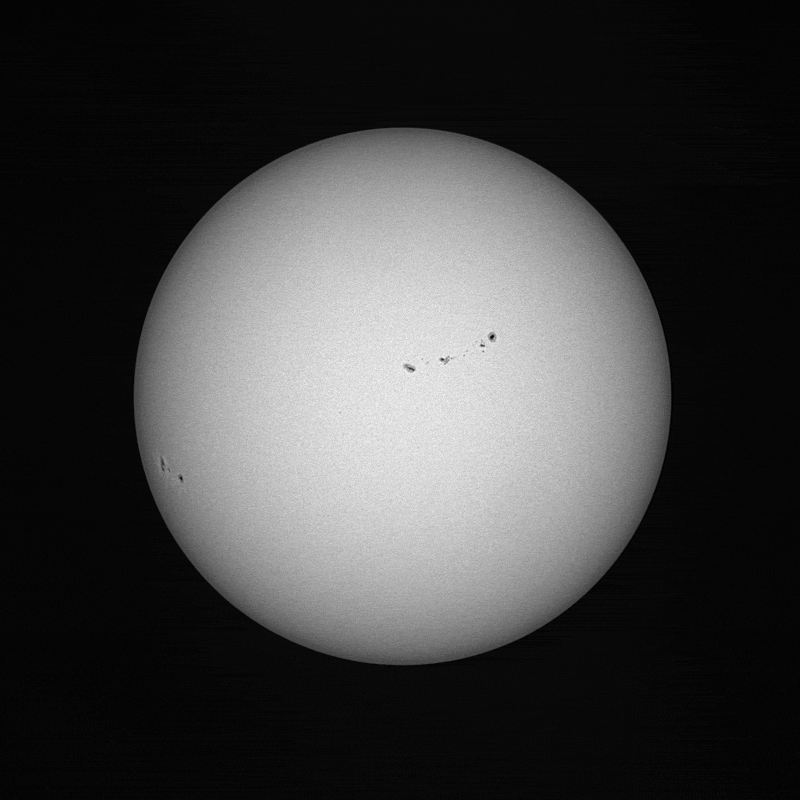 |
| 8/21/2017 eclipse partial phases, filtered |
Jean Kodama charted a 16 degree F drop in temperature and captured an amazing pinhole projection (see below):
http://astrocamera.net/2017/0821/pinhole.htm
-very bright stars and planets become visible during the day
venus was evident before totality. i did not see Rigel, but didn't really look for it (see image above)
-subtle abnormalities can be detected in shadows
edges perpendicular to the crescent becoming slightly fuzzy compared to edges parallel to the crescent:
 |
| note difference in shadow edges at index |
-pinhole or circular projections of the sun show a crescent instead of a circle (note these solar projections don't require a total eclipse, only partial phases):
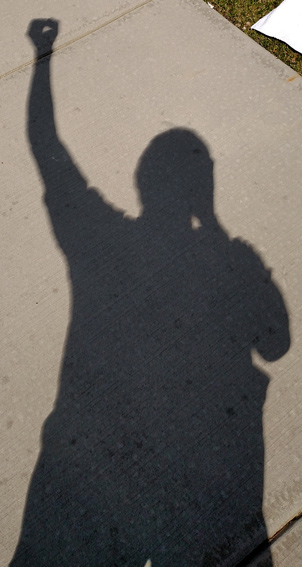 |
| shadow selfie sun in hand |
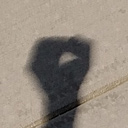 |
crescent projected through hand held in a circle
|
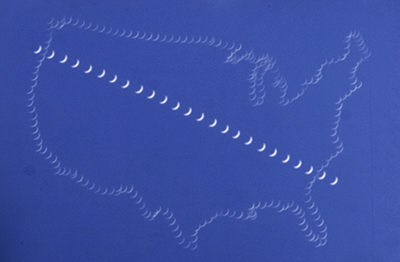 |
| Jean Kodama's amazing pinhole projection |
http://astrocamera.net/2017/0821/pinhole.htm
-shadowbands--strange waves of shadow can be seen moving on bright areas of the ground shortly before and after totality
saw them on the sidewalk while looking down at my laptop ;)
-unusual behavior from local wildlife
heard reports of rodents burrowing at the start of totality, birds chirping and settling in trees, dogs howling; a rooster crowing as the sun reappeared.
i did hear some cat calls.
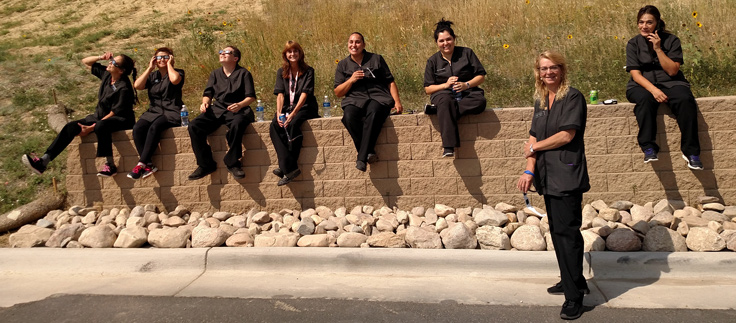 |
| Residence Inn staff given an hour off to watch the eclipse |
Image details:
-totality wider field:
Nikon D-60, AF-S DX NIKKOR 55-300mm f/4.5-5.6G ED VR, f/5.6 300 mm 1/20" iso 400
-partial phases:
DMK 51 web cam, Takahashi FS-60C, 60 mm aperture at f/4.2 with a reducer. Baader solar film, Fotga IR/UV cut filter. The full field of view is approximately 96x72 arc minutes with a resolution of 3.6"/px. video capture at 12 fps, aligned in autostakkert, wavelets in registax.
-cell phone Droid Turbo ;)
Casper Wyoming
42,50.9694N 106,15.5688W
8/21/2017
